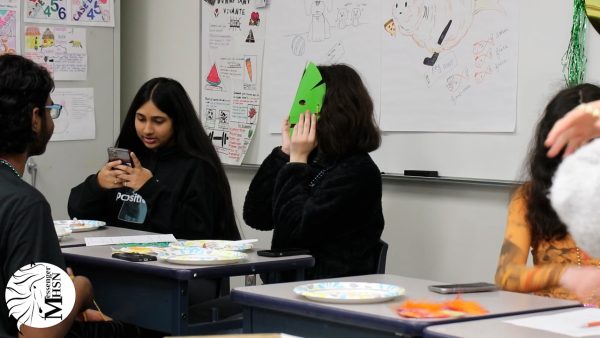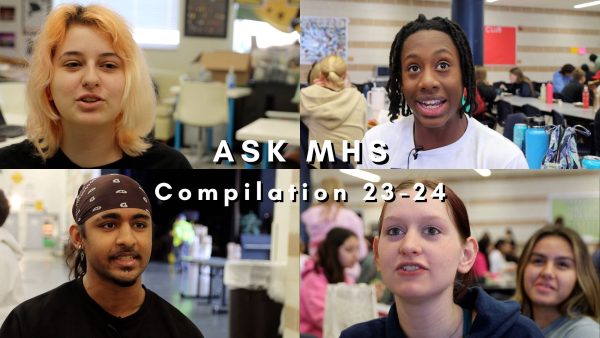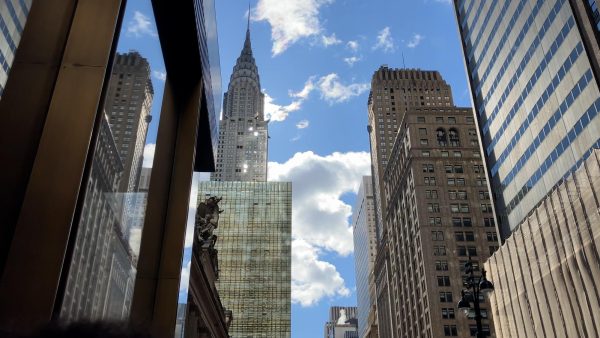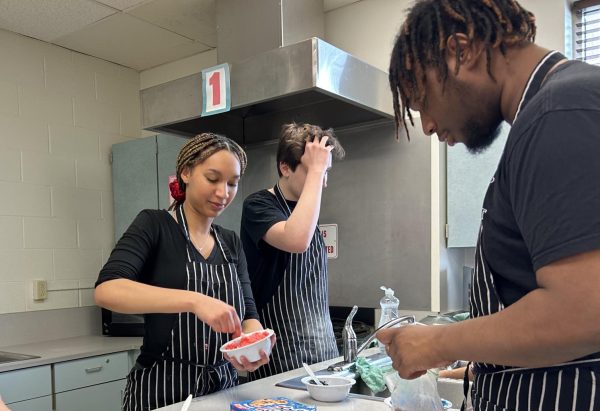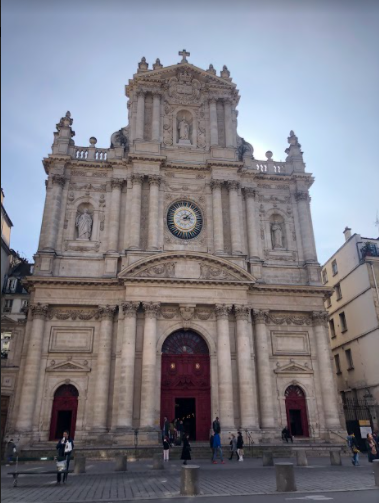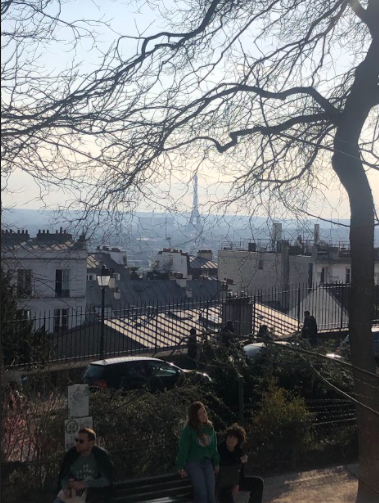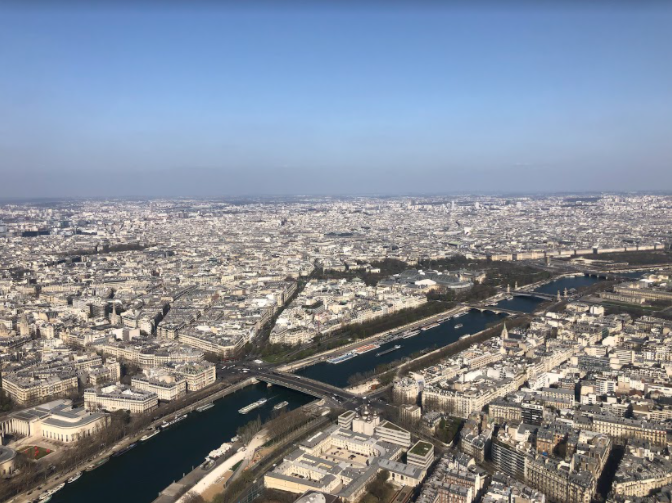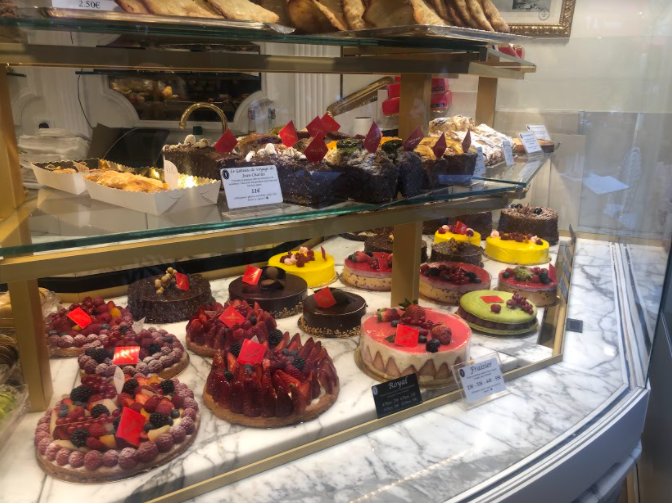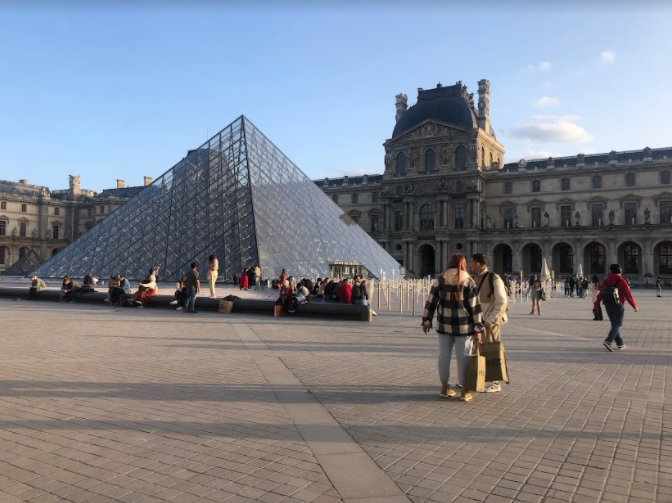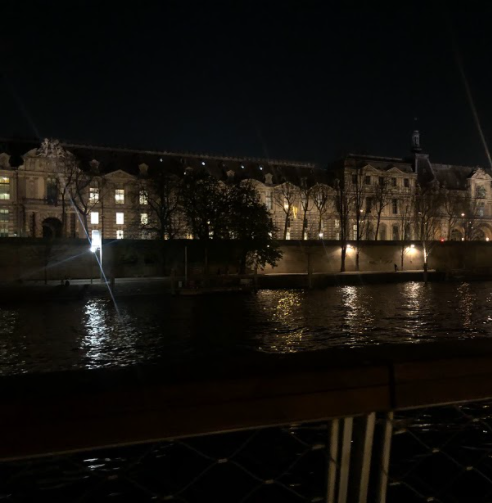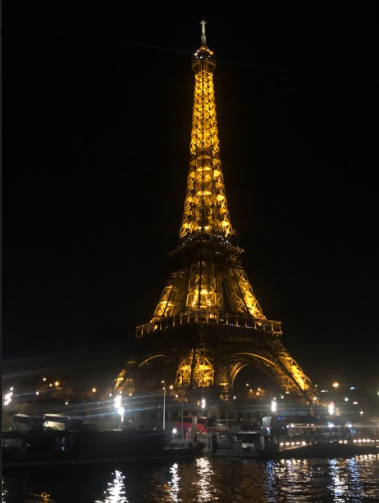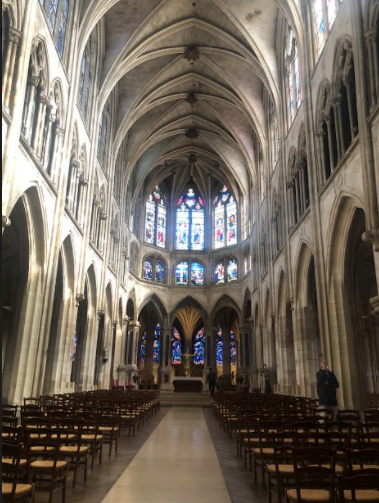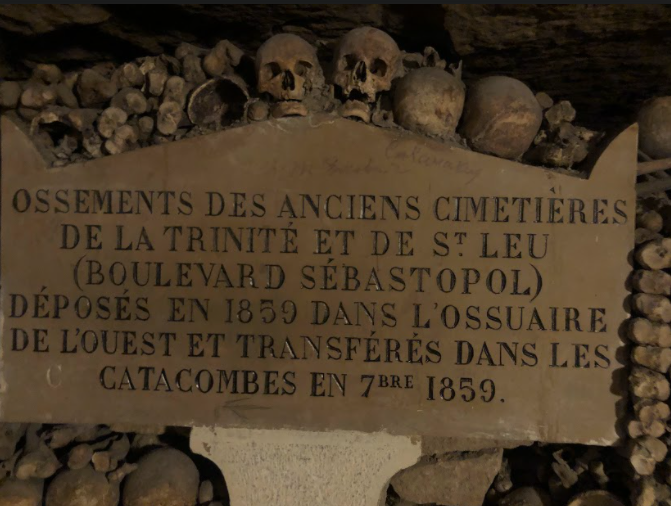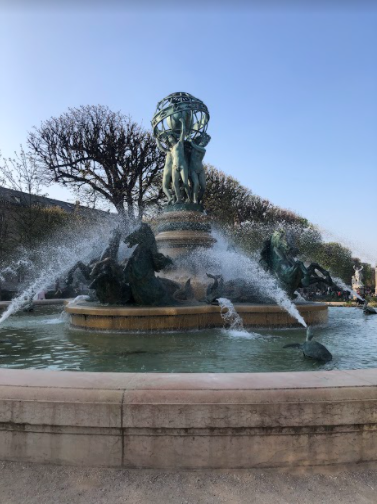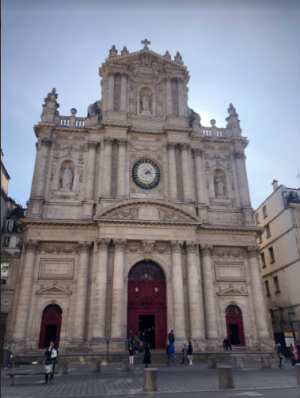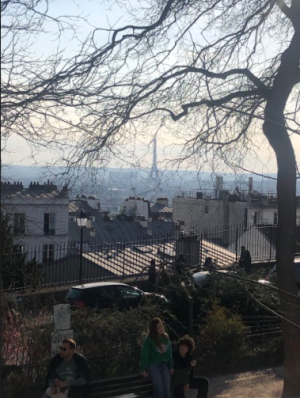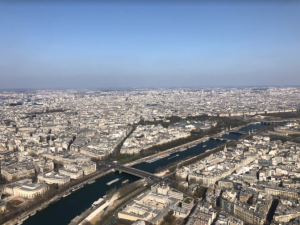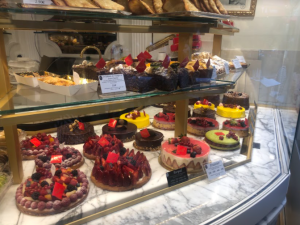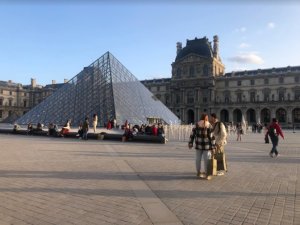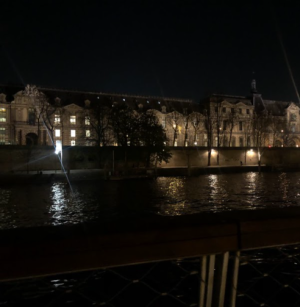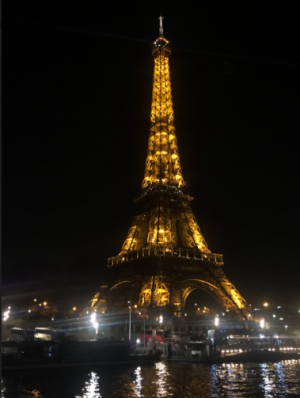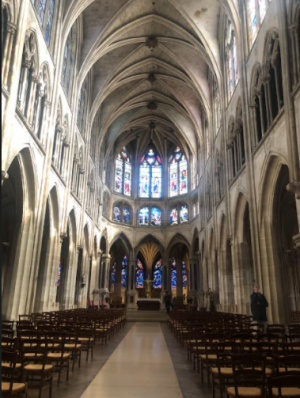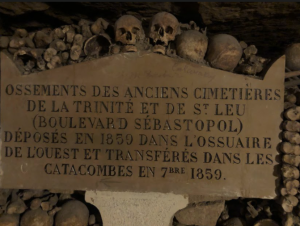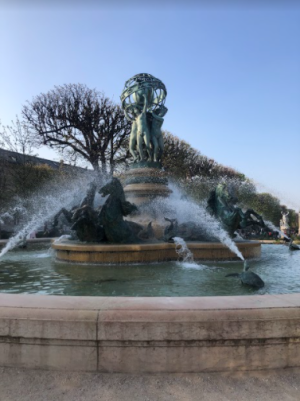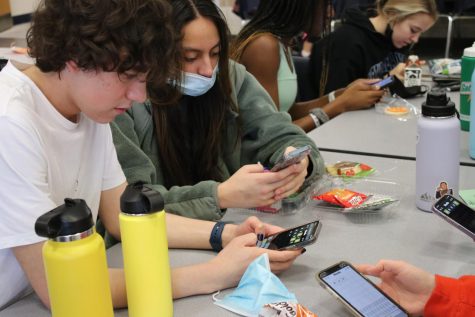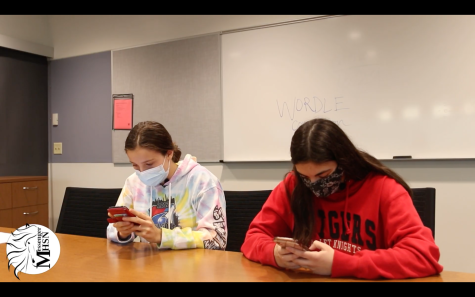European Enrichment
MHS classes use spring break as a time for cultural enrichment and exploration
Resting peacefully on a bench, disturbed only by a light breeze, junior Silvia Garcia took in the ambiance of her surroundings as she “people watched.” The backdrop to such a peaceful moment: L’Arc de Triomphe.
A group of French students and two teachers traveled to Paris, France, over spring break. This trip had been delayed two years as a result of COVID-19 and travel restrictions.
“I’ve traveled to other countries before but never with a group like this one or with the school,” Garcia said. “Traveling with a group is definitely different and more fun though because you get to talk and spend time with your friends.”
The group started every morning with a language class before spending the afternoon sightseeing and further immersing themselves in French culture. They did activities such as taking cooking classes, eating a meal with a French family, completing a scavenger hunt in the Louvre, visiting the Eiffel Tower and walking through the Catacombs.
Though the 9-hour flight through time zones left the group feeling groggy on the first day, Garcia said they were quick to recuperate and begin learning more about the culture of the city.
Garcia said as the students spoke primarily French all week at school, restaurants and in stores, they were quick to pick up on cultural differences and nuances in the language.
“By the end of the trip, I think my vocabulary had increased by a lot, and I could understand what most people were saying most of the time,” Garcia said. “There were times, though, that I heard so much French that my head would start to hurt and my brain was exhausted.”
Cultural Comprehension
While so much exposure can be tiring, Dr. Elizabeth Allen, French Professor at Washington University, said it is also the best way to continue learning the language.
“Until you go over there, you can’t really understand,” Dr. Allen said
Dr. Allen said the learning of the culture and the learning of a language itself complement each other. They often serve as a motivator to continue studying as students get intrigued and excited when hearing about the cultural differences.
“Sometimes students get stuck for a really long time at a certain plateau and going abroad will make it go up,” Dr. Allen said. “You may have a headache and it may be hard, and you may be nervous and anxious and sweating about it but it’ll make your language ability go up just by the immersion experience and it’ll bring that whole pleasure aspect into it, which will make all the difference in the world.”
The learning experience on the trip to France extended past just the language, however, as students such as junior Peyton Cusick found passion in exhibits that showcased her ideal future career: forensics.
“My favorite part of the trip was visiting the Catacombs under the city,” Cusick said. “It amazes me how they were able to build them.”
The group toured the underground graveyard that features more than a mile of bones arranged into a pathway with inscriptions on the walls.
Orchestra Travels
The MHS Orchestra also traveled to European countries over spring break.
Performing in Budapest, Vienna and Prague, James Nacy, orchestra teacher, said they were able to experience the deep musical history wherever they traveled. With history came cultural differences that extended past currency and language and into the music world.
“At the end of our performance in Budapest, the audience started clapping in unison in a rhythmic pulse. I asked our translator, ‘What does this mean?’” Nacy said. “I asked kind of panicked because I wasn’t sure if it was a good thing or a bad thing. ‘This,’ she shouted, ‘is the Hungarian way!’ It meant they liked us and wanted us to play more.”
The orchestra visited sites throughout Austria, Hungary and the Czech Republic.
“Our history buffs on the trip really got a lot of information handed to them,” Nacy said. “This trip represented the most countries we’ve ever gone to in one trip, with the greatest variety of cultures.”
Liyoung Martin, senior, said they had several tour guides who took them around the cities where they were able to admire the architecture before eating dinner together at the end of every day.
“The biggest cultural difference I observed was the amount of art and architecture dedicated to religion, specifically Christianity. Christianity has played a big role in American culture as well, but in Europe, you can physically see the effect that Christianity had in the formation of European culture almost everywhere you go,” Martin said.
Martin said he practiced quite a bit on his own in addition to the rehearsals during Ac Lab that orchestra held for months before the trip in preparation.
“Each of our three performances was at some large, magnificent, venerable location, and each time I look back, I can’t believe some high school orchestra from Chesterfield, Missouri, got to perform in them,” Martin said. “[The performances] were all good, but we were especially proud of the last one, and it was a great way to finish off the trip.”
Although the entire orchestra was not able to attend, Martin said there was still a large number of students who created a full sound while playing and made for an enjoyable experience.
“My favorite part about the trip was getting to talk and understand my friends in ways that wouldn’t normally have been possible in the mundane, repetitive environment of school,” Martin said. “I had talks with friends about religion and what their deepest thoughts are. I formed deeper connections with peers I’d only talked to a few times while in school.”
Your donation will support the student journalists of Marquette High School. Your contribution will allow us to purchase equipment and cover our annual website hosting costs. You may become a PATRON by making a donation at one of these levels: White/$30, Green/$50, Blue/$100. Patron names will be published in the print newsmagazine, on the website and once per quarter on our social media accounts.
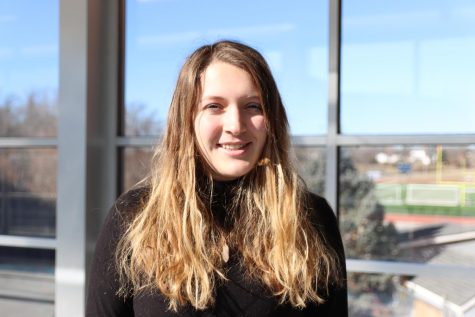
Marin Ellington (she/her), senior, is the Editor in Chief of the Marquette Messenger. In addition to her involvement in student journalism at Marquette,...



